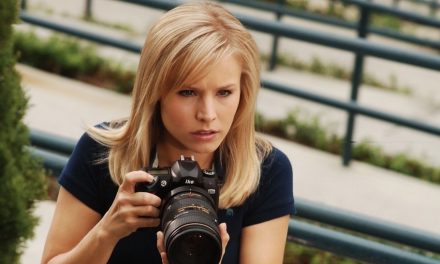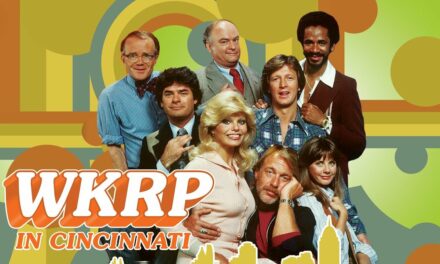It’s all happening around Sky at the moment. The first was an unexpected bid from the US giant Comcast, disrupting the cosy deal that the Murdoch and Disney groups had planned. The second was Sky’s own doing: to offer Netflix subscriptions on the Sky and Now TV platforms… which now incorporate voice recognition. One is a fascinating business saga that will impact on user choice in the long term. The other is a significant development in the biggest problem that the industry now faces: how to help people find content.
The problem with finding content is there is so much that you don’t know where to look. It isn’t in one place, and isn’t structured the same in any of those places. Terrestrial TV still offers the schedule, a really handy way of scanning through a lot of content quickly, structured in time appropriate slots and across clearly defined channel brands. This used to work well, but arguably only the BBC has cracked how to re-present that content for an online streaming user with its iPlayer. Just go to the ITV Hub and see how badly it can be done.
Beyond terrestrial, we get a number of providers which have more narrow generic offerings that the traditional broadcasters. Netflix and Amazon are untroubled by news, documentary, factual entertainment, even sport (Amazon is the dog that didn’t bark in the recent football bidding war). But they still can’t organise the presentation of their content very effectively. All the brief descriptions sound similar; the graphics haven’t yet learned from movie posters; episode synopses are so weird that you cant even identify an episode you have seen from them. Each platform attempts to learn about its individual users, but their lack of range limits what they can offer you. Unless, that is, you just want to watch US box sets and their clones for the rest of your life.
So once you are into the wonderful world of SVOD (subscriber video on demand), then you are faced with a bewildering range of places to search, And as research by the accountant/consultant giant Accenture has discovered
“Global viewers would rather not juggle OTT services such as Netflix and Amazon and would prefer a single access point for video content. … Only 14% said that they would prefer to manage multiple subscription video services themselves. Furthermore, 51% of the viewers feel that they are paying for some form of content they don’t care about, with 49% saying they only pay for content they want to watch.” (TBI)
So any service provider that can bring various subscriptions into one place clearly has an advantage. BT do it already : “We are lucky in that we can embrace Netflix, integrate it in our EPG… and partner with Netflix. “That is how we see ourselves going forwards. We are a super aggregator… with a nice, clean, easy-to-use customer interface.” (TBI)
This is a growing necessity for viewers as there are now more than 200 OTT service providers in the US alone, according to Accenture. You have to open up multiple interfaces, none of which is really very responsive or informative. The result, all too often, is what I called many years ago ‘choice fatigue’ (Seeing Things, 2000). And the response to choice fatigue is to stick with what you know.
Sky are taking an initiative to solve this problem. First, it is bringing together two of those interfaces (its own and Netflix) into a single space. Then it is introducing an element of voice control: no more punching in titles letter by letter if you are looking for something specific, from a social media recommendation for example (or an old fashioned print preview). Just say the title and it presents something like it, in principle. But it probably needs to do a bit of machine learning so don’t expect instant satisfaction.
The difference with the Sky offer is that it obviously can include all Sky services that the subscriber takes alongside Netflix, and also linear TV as well. Sky’s experiments with voice recognition are equally important, as it will (in time) eliminate the need for keying in search terms with the clunky onscreen keyboards operated by remotes, one letter at time. This is currently the weakest link in the already creaky search environment that TV users have to put up with. Has no-one in the TV hardware industry ever seen the internet or used a PC? Sky is (gradually) taking on this challenge, and I bet BBC iPlayer will not be far behind. Sky is able to innovate in this area because it is a relatively independent company, not entirely controlled by one interest: that’s why Sky News is not Fox News. The current takeover battle will have profound consequences for Sky’s level of independence.
Anyone who has experienced what Comcast call ‘customer service’ in the US (where almost all their business is at the moment) is probably dreading their takeover. Comcast is regularly bottom of the polls. This is a US focussed giant trying to get international before it is dwarfed by other multinational multi-service media conglomerates. As the Murdoch family has found, things are getting super-big in the media industry just now, as all kinds of services suddenly become combinable, and the exploitation of user data appears to be the thing that will dominate the future. The bigger you are, the more data you have on your customers’ behaviour, as the Fangs (Facebook, Amazon, Netflix, Google) will tell you.
That is why the Murdochs are selling Fox to Disney. The problem is, as everybody knows, Fox doesn’t own Sky. It is merely the controlling shareholder. And that has caused all sorts of regulatory problems as the Murdoch’s press empire has not exactly behaved well in the recent past. So the UK regulators are currently mulling over whether to allow Fox to buy out all the other shareholders in Sky, as they want to. Ofcom spinelessly said it would be OK, but the Monopolies Commission had a better grasp of what media control might mean, so stepped in. Disney waits, happy to take Sky on, including Sky News. Now Comcast’s bid arrives, offering substantially more than the Murdoch’s are offering for the bit they don’t already own. The battle will get interesting. And before long, no doubt, Netflix will make a series about it, with Michael Douglas in full Gordon Gekko mode as Rupert Murdoch.
John Ellis is Professor of Media Arts at Royal Holloway University of London. He leads the ADAPT project on the history of technologies in TV, funded by a €1.6 million grant from the European Research Council. He is the author of Documentary: Witness and Self-revelation (Routledge 2011), TV FAQ (IB Tauris 2007), Seeing Things (IB Tauris 2000) and Visible Fictions (1984). Between 1982 and 1999 he was an independent producer of TV documentaries through Large Door Productions, working for Channel 4 and BBC. He is chair of Learning on Screen and also oversees the Royal Holloway team working on EUscreen. His publications can be found HERE.





![SHOW, [DON’T ASK] DON’T TELL: QUEER REPRESENTATION IN STAR TREK: ENTERPRISE by Melissa Beattie](https://cstonline.net/wp-content/uploads/2025/04/QUEERENT-440x264.png)